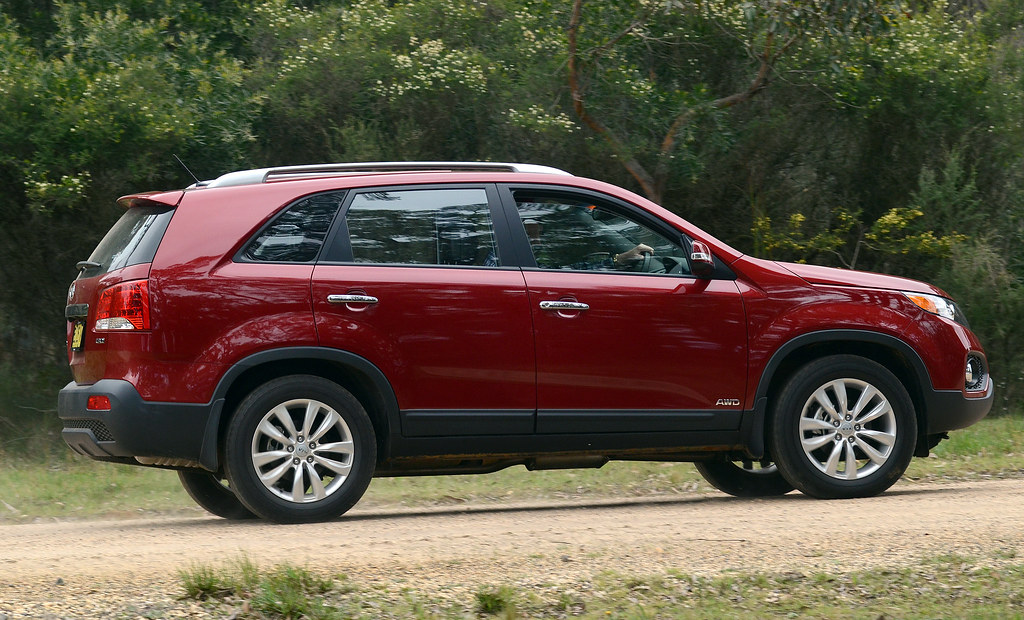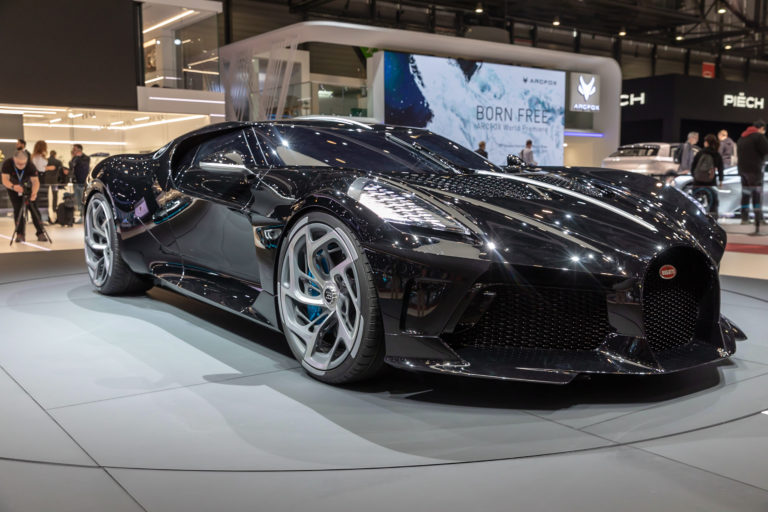
The automotive world is a vibrant tapestry, woven with threads of legendary performance vehicles that command immediate recognition and reverence. From the hallowed halls of Stuttgart to the historic factories of Detroit, certain models like the Porsche 911, the Ford Mustang GT, and the Chevrolet Corvette ZR1 often dominate the conversation, basking in the spotlight of critical acclaim and public adoration. These are the cars that define generations, set benchmarks, and fill the garages of collectors and dreamers alike.
However, beneath this celebrated surface lies a rich stratum of forgotten champions and unsung heroes – sports cars that, despite their impressive capabilities and engaging driving experiences, have somehow flown under the radar. Whether it’s due to being overshadowed by more powerful siblings, suffering from a lukewarm initial reception, or simply being ahead of their time, these vehicles offer an exhilarating blend of performance, handling, and character that demands a second look. For the true performance seeker, someone who values driving dynamics and objective evidence over mere brand prestige or aggressive looks, these overlooked gems present an opportunity to acquire serious automotive prowess without the inflated price tags.
In this in-depth exploration, we delve into a collection of these remarkable machines. We’ll peel back the layers of misconception and marketing hype, relying on detailed reviews, comparative analyses, and an enthusiast-focused lens to reveal what makes each of these cars a compelling choice. Our journey will highlight their unique engineering, the thrills they deliver on the road and track, and why they represent some of the most genuinely rewarding sports car experiences that many critics and drivers initially missed. Get ready to discover the true spirit of performance, often found where you least expect it.
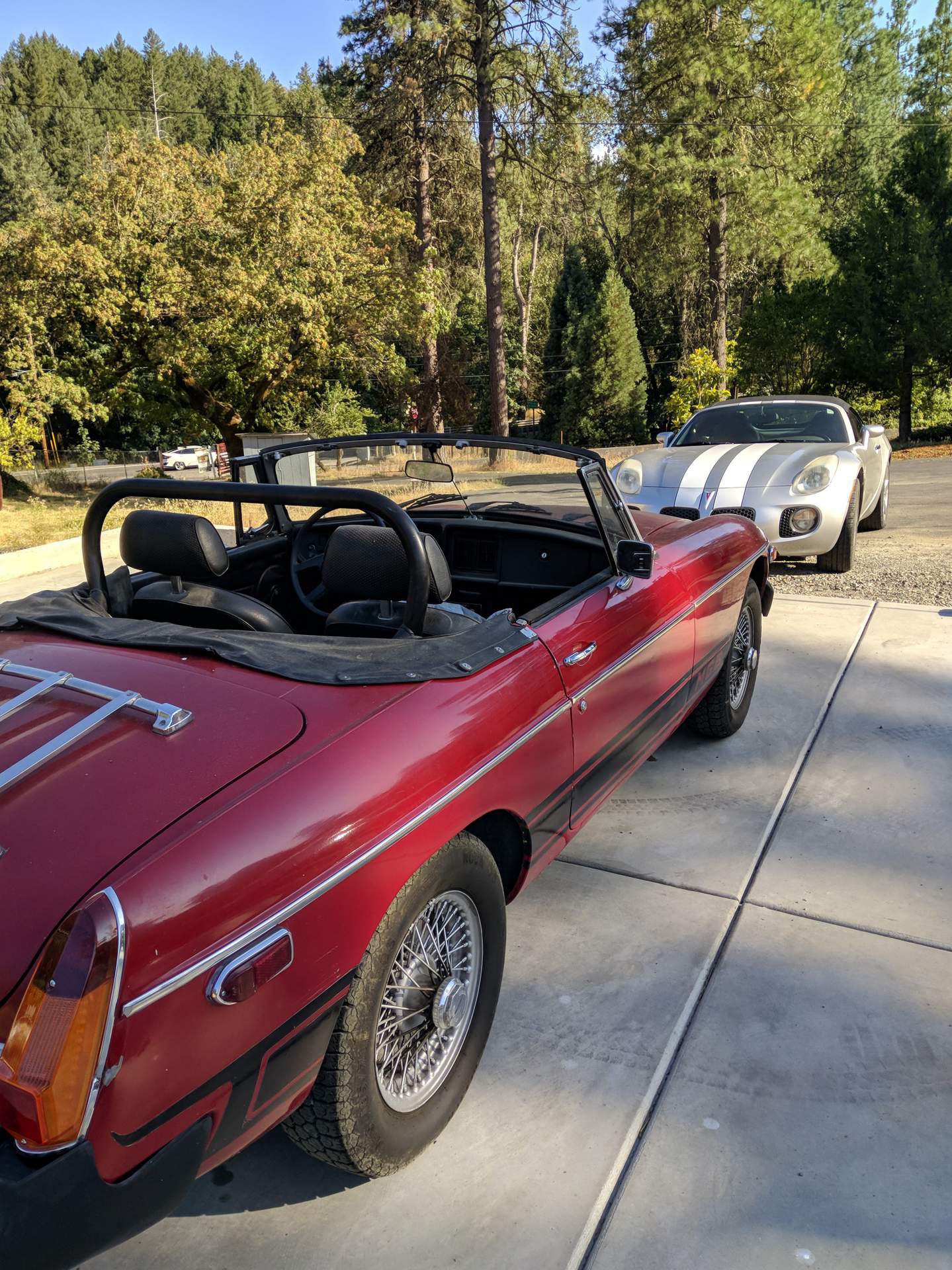
1. **Pontiac Solstice GXP: A Small Roadster with Big Performance**The Pontiac Solstice GXP stands out as a genuine sleeper in the realm of small roadsters, a testament to American engineering when many might have dismissed it. While the base Solstice, with its simple 2.4-liter inline-4, might not have sparked widespread excitement, the GXP variant dramatically transformed this perception, elevating the car into a truly exciting proposition for performance enthusiasts. This isn’t merely a cosmetic upgrade; it’s a fundamental enhancement that redefines the car’s dynamic capabilities.
At the heart of the GXP’s appeal is its turbocharged 2.0-liter inline-4 engine, a compact powerhouse that delivers a robust 260 horsepower and an equally impressive 260 lb-ft of torque. This output is not just substantial for a car of its size; it provides a thrilling power-to-weight ratio that translates into genuinely exhilarating acceleration and responsive throttle input. What’s more, for those seeking an even greater rush, the GXP offered an option to further boost the power output to a staggering 290 horsepower, pushing its performance well into serious sports car territory.
Beyond its potent engine, the Solstice GXP truly shines in its handling. Engineered for agility and driver engagement, it offers excellent handling characteristics that make every winding road an adventure. The car’s lightweight chassis, combined with its precise steering, creates a highly communicative driving experience, allowing the driver to feel connected to the road with a directness often reserved for higher-priced European competitors. Despite its original criticisms regarding design or interior quality, the GXP remains a fun, affordable roadster that continues to impress with its blend of performance and driving pleasure, making it a valuable find on the used market.
Car Model Information: 2007 Pontiac Solstice Base
Name: Pontiac Solstice
Manufacturer: General Motors
Production: 2005–2010,65,724 produced
ModelYears: 2006–2010
Assembly: Wilmington, Delaware
Class: Sports car
Layout: Front-engine, rear-wheel-drive layout#Front mid-engine, rear-wheel-drive layout
Platform: GM Kappa platform
Predecessor: Pontiac Fiero
BodyStyle: Roadster (automobile),targa top
Wheelbase: 95.1 in
Abbr: on
Length: 161.1 in
Width: 71.4 in
Height: 50.2 in
Weight: 2860 lb
Engine: GM Ecotec engine#LE5,GM Ecotec engine#2.0 LNF (Z20NHH Opel)
Transmission: Aisin Seiki,GM 5L40 transmission
Related: Saturn Sky,Opel GT#GT (roadster) (2007–2010),Daewoo G2X
Designer: Franz von Holzhausen,Vicki Vlachakis,Wayne Cherry
Categories: All articles needing additional references, All articles with unsourced statements, Articles needing additional references from March 2025, Articles with short description, Articles with unsourced statements from March 2025
Summary: The Pontiac Solstice is a convertible sports car that was produced by Pontiac from 2005 to 2010. Introduced at the 2004 North American International Auto Show, the Solstice roadster began production in Wilmington, Delaware, starting in mid-2005 for the 2006 model year. It is powered by a naturally aspirated 2.4 L I4 engine, producing 177 hp (132 kW) and 166 lb⋅ft (225 N⋅m) of torque.
The exterior styling of the production Solstice is similar to that of the 2002 Solstice concept that preceded it. Production of the Solstice was to be running before summer 2005, but delays at the Wilmington plant pushed volume production to the fourth quarter. The new hardtop targa top 2009 model was announced in mid-2008. The Solstice uses the GM Kappa platform, which also underpins the Saturn Sky, Opel GT, and Daewoo G2X. It was the brand’s first two-seater since the Pontiac Fiero was discontinued in 1988.
The Solstice was nominated for the North American Car of the Year award and Design of the Year award from the Automobile Journalists Association of Canada (AJAC) for 2006. It was a runaway hit for Pontiac, with 7,000 orders in the first 10 days of availability and 6,000 more orders before winter. Although first-year production was planned at 7,000, GM apologized to customers for delays and increased production, delivering 10,000 by March 1.
Following the 2008 economic recession, GM discontinued the Pontiac division. Production ended with the closure of the Wilmington Assembly plant in July 2009.
Get more information about: Pontiac Solstice
Buying a high-performing used car >>>
Brand: Pontiac Model: Solstice
Price: $7,999 Mileage: 62,177 mi.

2. **Porsche 924: An Entry-Level Classic**The Porsche 924 occupies a unique and often misunderstood position in the storied history of the Stuttgart marque. Initially conceived as a joint venture with Volkswagen, intended to be a more accessible sports car for the German giant, it eventually found its home within Porsche’s own lineup. This decision marked a significant strategic move for Porsche, aiming to broaden its market appeal beyond the iconic but often unattainable 911, and creating a solid entry point for aspiring Porsche owners.
Powered by a 2.0-liter engine, the 924 may not have possessed the raw power that hardcore enthusiasts typically associate with Porsche. However, it was never designed to be a fire-breathing supercar. Instead, the 924 focused on delivering a balanced and engaging driving experience, a hallmark of Porsche’s engineering philosophy. Its transaxle layout, with the engine up front and the transmission at the rear, contributed to a near-perfect weight distribution, which in turn provided fantastic handling characteristics that were praised for their precision and predictability, making it a joy to drive even for novice sports car owners.
Over its production run from 1975 to 1985, the 924 received various upgrades, including the introduction of a more powerful 2.5-liter engine in later iterations, further enhancing its performance credentials. Ultimately, the 924 laid the essential groundwork for future front-engined Porsche models, evolving directly into the even more capable Porsche 944. As a true classic, the 924 serves as a powerful reminder of Porsche’s commitment to making sports cars accessible to a broader audience, demonstrating that an engaging driving experience doesn’t always require a six-figure price tag or the most aggressive styling. It proves that a well-engineered, balanced machine can deliver immense satisfaction.
Car Model Information: 1988 Porsche 924 S
Name: Porsche 924
Designer: Harm Lagaay
Manufacturer: Porsche
Production: 1976–1988
Assembly: Neckarsulm,Stuttgart
Class: Sports car
Layout: Front-engine, rear-wheel-drive layout
BodyStyle: 2+2 (car body style),coupé
Engine: List of discontinued Volkswagen Group petrol engines#EA831,Turbocharger,2.5 L M44/40 I4
Transmission: Magna PT
Length: 4200 mm
Abbr: on
Wheelbase: 2400 mm
Width: 1685 mm
Height: 1270 mm
Weight: 1242 kg
Predecessor: Porsche 914
Successor: Porsche 944
Categories: 1980s cars, 2+2 coupés, All articles needing additional references, Articles needing additional references from September 2024, Articles with short description
Summary: The Porsche 924 is a sports car produced by Porsche in Neckarsulm, Germany, from 1976 until 1988. A two-door, 2+2 coupé, the 924 replaced the 912E and 914 as the company’s entry-level model.
Although the 928 was designed first, the 924 was the first production road-going Porsche to use water cooling and a front-engine, rear-wheel-drive layout. It was also the first Porsche to be offered with a conventional fully automatic transmission. Like the 914, the 924 began as a joint venture with Volkswagen (VW). Although VW canceled plans to sell a version under its own nameplate, opting to market the independently-developed Scirocco instead, the 924 was assembled in a VW-operated plant and initially used a VW engine.
The 924 made its public debut in November 1975 and a turbocharged version was introduced in 1978. In response to increasing competition, Porsche introduced an upgraded version with a new Porsche-built engine as the 944, which replaced the 924 in the U.S. in 1983. In 1985, VW discontinued the engine used in the 924, prompting Porsche to use a slightly detuned 944 engine instead, drop the Turbo model, rename the vehicle as the 924S, and reintroduce it in the U.S. The 924 was a sales success, with just over 150,000 produced.
Get more information about: Porsche 924
Buying a high-performing used car >>>
Brand: Porsche Model: 924
Price: $2,500 Mileage: 94,713 mi.
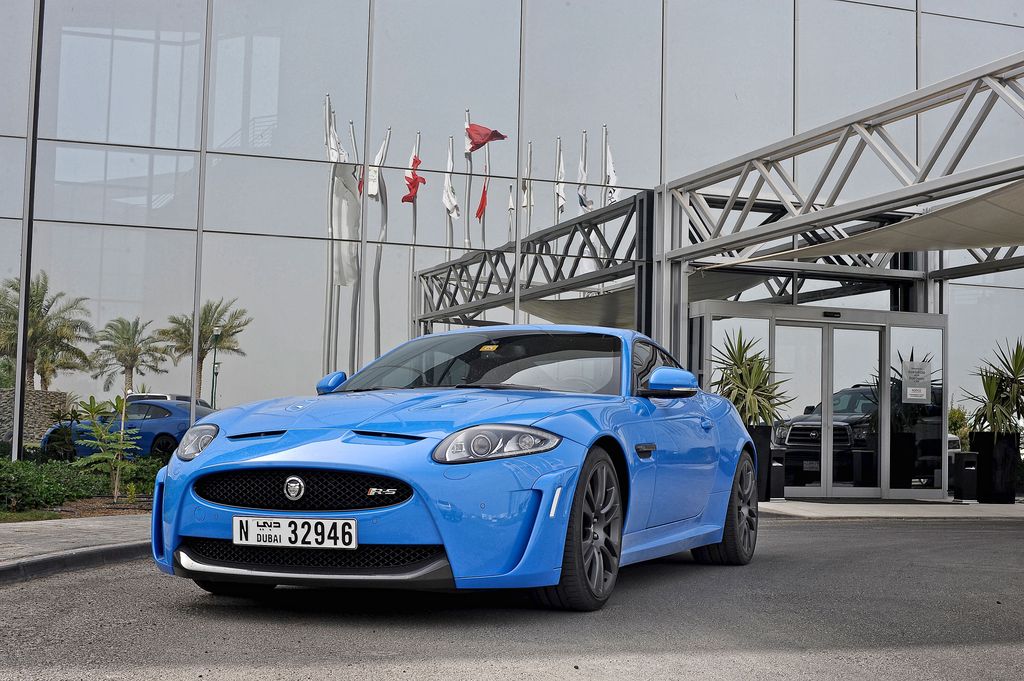
3. **2010 Jaguar XKR: A Luxurious GT with Power**The 2010 Jaguar XKR, part of the distinguished XK series, represents a magnificent blend of luxurious grand touring capabilities and outright sports car aggression that often goes unacknowledged. While Jaguars are frequently lauded for their elegant design and sumptuous interiors, the XKR variant from this era was a potent statement, proving that the British marque could deliver exhilarating performance alongside its traditional refinement. It’s a vehicle that, despite its considerable strengths, struggled to command the same attention as some of its German rivals.
Underneath its aggressively sculpted bonnet, the XKR housed a supercharged 5.0-liter V8 engine, a marvel of engineering that churned out an astonishing 510 horsepower. This powerhouse provided genuinely exhilarating performance, capable of propelling the luxurious GT with a urgency that would surprise many. The XKR was not just about straight-line speed; it was equipped with Jaguar Drive Control, an intelligent system offering three distinct driving modes designed to optimize performance for various conditions, allowing the driver to tailor the car’s dynamics from comfortable cruising to aggressive sport driving.
While earlier iterations of the XKR sometimes faced scrutiny regarding reliability, the facelifted 2010 model addressed many of these concerns, presenting a more refined and robust high-performance vehicle. This particular vintage offered a well-rounded package: striking design, a lavish cabin, and the kind of raw power typically associated with dedicated sports cars. The 2010 Jaguar XKR remains a sleek and powerful grand tourer that deserves far more recognition for its exceptional balance of opulence and performance, offering a compelling alternative to mainstream choices for the discerning enthusiast.
Car Model Information: 2008 Jaguar XKR Base
Name: Jaguar XK
Caption: Jaguar XKR (X150)
Manufacturer: Jaguar Cars,Jaguar Land Rover
Aka: Jaguar XKR/XK8
Production: 1996–2014
ModelYears: 1996–2015
Assembly: Coventry
Predecessor: Jaguar XJS
Successor: Jaguar F-Type
Class: Grand tourer
BodyStyle: coupé,liftback,convertible
Layout: Front-engine, rear-wheel-drive layout
Platform: Jaguar XJS,Jaguar XJ (X350)
Engine: Jaguar AJ-V8 engine
Transmission: unbulleted list
Designer: Geoff Lawson (designer),Ian Callum
Sp: uk
Categories: 2000s cars, All Wikipedia articles written in British English, Articles with short description, Cars introduced in 1996, Commons category link from Wikidata
Summary: The Jaguar XK is a two-door 2+2 grand tourer manufactured and marketed by Jaguar Cars from 1996–2012 and by Jaguar Land Rover from 2013–2014 in hatchback coupé and convertible body styles, across two generations. The XK was introduced at the Geneva Motor Show in March 1996 and was discontinued in July 2014.
The first generation was marketed as the XK8, replacing the XJS and was Jaguar’s first 8-cylinder model since the Daimler 250, introducing the all-new Jaguar AJ-V8 engine. The XK8 shared its platform with the Aston Martin DB7 which was itself based on the stillborn XJ41/42 project built on a modified XJ-S chassis conceived in the mid-1980s. The second generation of the XK, noted for its aluminium monocoque chassis and construction, was launched in 2006 for the 2007 model year. The XKR performance variant was introduced in both of the generations with the second generation also offering a more powerful XKR-S variant.
Get more information about: Jaguar XK
Buying a high-performing used car >>>
Brand: Jaguar Model: XKR
Price: $21,685 Mileage: 53,805 mi.
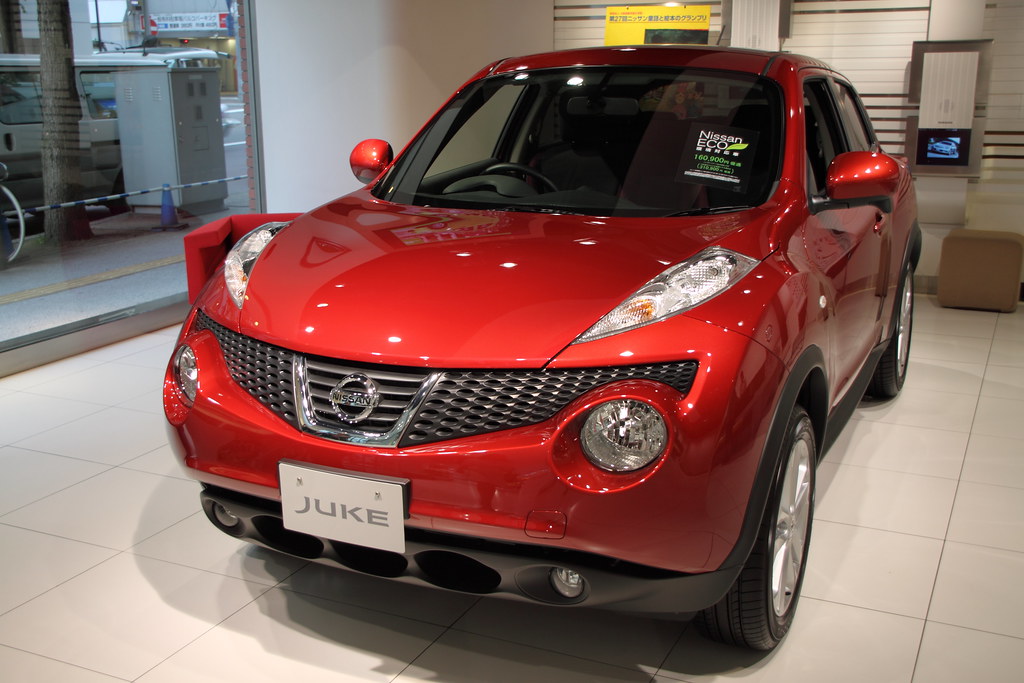
4. **1995 Nissan 300ZX: A Z-Car with Substance**The Nissan 300ZX, particularly the Z32 generation that includes the 1995 model, is a fascinating and often unfairly critiqued entry in the pantheon of iconic Z-cars. Despite its undeniable lineage and significant performance credentials, this model frequently faced criticism during its production run for being perceived as heavier and less overtly powerful than some of its Japanese and European rivals. However, such initial assessments often missed the true substance of what was, and still is, a truly fantastic sports car, brimming with advanced technology and a deeply engaging driving experience.
At its core, the 300ZX featured a sophisticated 3.0-liter V6 engine, a robust and smooth-revving unit that provided ample power for spirited driving. The real star, however, was the turbocharged variant, which elevated performance to a whole new level. This twin-turbocharged configuration officially produced close to 300 horsepower, a figure that was constrained by Japan’s “gentleman’s agreement” regarding power output. In reality, real-world dyno tests and anecdotal evidence suggested figures closer to or even exceeding 300 horsepower, placing it firmly among the performance elite of its era. This power, combined with its advanced multi-link suspension, provided a remarkably engaging driving experience that blended aggression with refinement.
Beyond raw power, the 300ZX offered excellent handling, a testament to Nissan’s meticulous engineering. Its balanced chassis dynamics and responsive steering made it a joy on twisty roads, while its distinctive exhaust note added to the overall sensory appeal. Alongside the Toyota Supra, the 300ZX Z32 helped to define Japanese performance in the 1990s, yet it still flies under the radar for many. Despite those early criticisms, the 1995 Nissan 300ZX holds up as a superbly engineered, fun-to-drive sports car, a true hidden gem that continues to offer significant value and performance for enthusiasts willing to look past its initial market reception.
Car Model Information: 1990 Nissan 300ZX GS
Name: Nissan 300ZX
Class: Grand Tourer
Manufacturer: Nissan
Production: 1983–2000
Assembly: ubl
Aka: Nissan Fairlady Z
Layout: Front-engine, rear-wheel-drive layout
Predecessor: Nissan Fairlady Z (S130)
Successor: Nissan 350Z
Categories: 1990s cars, 2+2 coupés, All articles needing additional references, All articles with unsourced statements, Articles needing additional references from May 2021
Summary: The Nissan 300ZX is a sports car that was produced across two different generations. As with all other versions of the Z, the 300ZX was sold within the Japanese domestic market under the name Fairlady Z.
It was sold in Japan from 1983 to 2000 and in the United States from 1984 to 1996, the 300ZX name followed the numerical convention initiated with the original Z car, the Nissan Fairlady Z (S30), which was marketed in the U.S. as the 240Z. The addition of the “X” to the car’s name was a carryover from its predecessor, the 280ZX, to signify the presence of more luxury and comfort oriented features. The first generation 300ZX known as the Z31 model was produced from 1983 through 1989 and was a sales success becoming the highest volume Z-car for Nissan.
To become even more competitive in the sports car market, the second generation 300ZX was driven up-market. It was redesigned to be faster and to feature more advanced technology, but came with a higher price than its predecessor, with consecutive price increases each model year of availability. As such, sales dwindled each year, a trend in the higher end sports car market at the time, and Nissan placed a hiatus on selling new Nissan Z-Cars to the US after the 1996 model year, though the car would continue to be sold in the Japan domestic market until 2001 in low production numbers.
Car and Driver placed the Z32 on its Ten Best list for seven consecutive years, each model year of its availability in the United States. Motor Trend awarded it as the 1990 Import Car of the Year. The Nissan 350Z, officially the Z33 generation Z-Car, succeeded the 300ZX in 2003.
Get more information about: Nissan 300ZX
Buying a high-performing used car >>>
Brand: Nissan Model: 300ZX
Price: $24,657 Mileage: 21,680 mi.
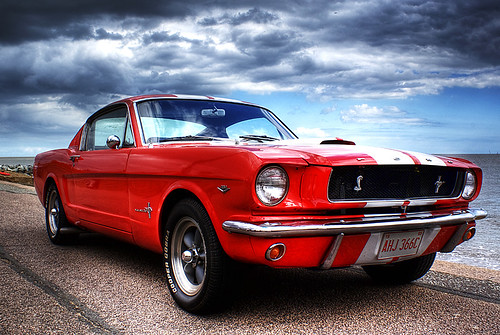
5. **2016 Ford Mustang EcoBoost: Lighter and Agile**The 2016 Ford Mustang EcoBoost often finds itself in an unusual position within the Mustang family. Surrounded by its V8-powered GT siblings, which often grab headlines with their thunderous exhaust notes and brute force, the EcoBoost variant might seem like an unorthodox choice for a list of underrated sports cars. However, to dismiss it based solely on its cylinder count would be a significant oversight, as this four-cylinder Mustang is a highly capable and surprisingly agile machine, offering a distinctly different, yet equally rewarding, driving experience.
Powering the 2016 Mustang EcoBoost is a sophisticated 2.3-liter EcoBoost engine, which, through the magic of turbocharging, produces a robust 310 horsepower. This output is not only impressive for a four-cylinder but, crucially, it’s paired with a lighter overall curb weight compared to the V8 models. This reduced mass directly translates into enhanced agility and a more responsive feel, making the EcoBoost Mustang remarkably nimble through corners and exceptionally balanced. It provides a level of precision that can genuinely surprise those accustomed only to the V8’s straight-line dominance.
Ford further enhances the EcoBoost’s performance potential with its optional Handling Package. This critical upgrade includes performance enhancements such as larger Brembo brakes, wider, grippier tires, and the highly advanced MagneRide adaptive dampers. These additions transform the car into a sharper, more focused track machine, allowing it to hold its own against more expensive competitors. Retaining the iconic Mustang aesthetic at a more economical price point, the 2016 Ford Mustang EcoBoost stands as an excellent choice for performance enthusiasts who prioritize agility, responsiveness, and budget-conscious thrills, proving that sometimes, less can indeed be more.
Car Model Information: 1966 Ford Mustang Base
Name: Ford Mustang
Caption: 2018 Ford Mustang GT 5.0
Aka: Ford T5 (Germany)
Manufacturer: Ford Motor Company
Production: March 1964 – present
ModelYears: 1965–present
Class: Unbulleted list
BodyStyle: Unbulleted list
Layout: Front-engine, rear-wheel-drive layout
Categories: 1970s cars, 1980s cars, 1990s cars, 2+2 coupés, 2000s cars
Summary: The Ford Mustang is an American automobile manufactured and marketed by Ford since 1964, as Ford’s longest nameplate in continuous production. Currently in its seventh generation, it is the fifth-best selling Ford car nameplate. The namesake of the “pony car” automobile segment, the Mustang was developed as a highly styled line of sporty coupes and convertibles derived from existing model lines, initially distinguished by its pronounced “long hood, short deck” proportions.
Originally predicted to sell 100,000 vehicles yearly, the 1965 Mustang became the most successful vehicle launch since the 1927 Model A. Introduced on April 17, 1964 (16 days after the Plymouth Barracuda), over 400,000 units were sold in its first year; the one-millionth Mustang was sold within two years of its launch. In August 2018, Ford produced the 10-millionth Mustang; matching the first 1965 Mustang, the vehicle was a 2019 Wimbledon White convertible with a V8 engine.
The success of the Mustang launch led to multiple competitors from other American manufacturers, including the Chevrolet Camaro and Pontiac Firebird (1967), AMC Javelin (1968), and Dodge Challenger (1970). It also competed with the Plymouth Barracuda, which was launched around the same time. The Mustang also had an effect on designs of coupes worldwide, leading to the marketing of the Toyota Celica and Ford Capri in the United States (the latter, by Lincoln-Mercury). The Mercury Cougar was launched in 1967 as a unique-bodied higher-trim alternative to the Mustang; during the 1970s, it included more features and was marketed as a personal luxury car.
From 1965 until 2004, the Mustang shared chassis commonality with other Ford model lines, staying rear-wheel-drive throughout its production. From 1965 to 1973, the Mustang was derived from the 1960 Ford Falcon compact. From 1974 until 1978, the Mustang (denoted Mustang II) was a longer-wheelbase version of the Ford Pinto. From 1979 until 2004, the Mustang shared its Fox platform chassis with 14 other Ford vehicles (becoming the final one to use the Fox architecture). Since 2005, Ford has produced two generations of the Mustang, each using a distinct platform unique to the model line.
Through its production, multiple nameplates have been associated with the Ford Mustang series, including GT, Mach 1, Boss 302/429, Cobra (separate from Shelby Cobra), and Bullitt, along with “5.0” fender badging (denoting 4.9 L OHV or 5.0 L DOHC V8 engines).
Get more information about: Ford Mustang
Buying a high-performing used car >>>
Brand: Ford Model: Mustang
Price: $32,991 Mileage: 98,811 mi.
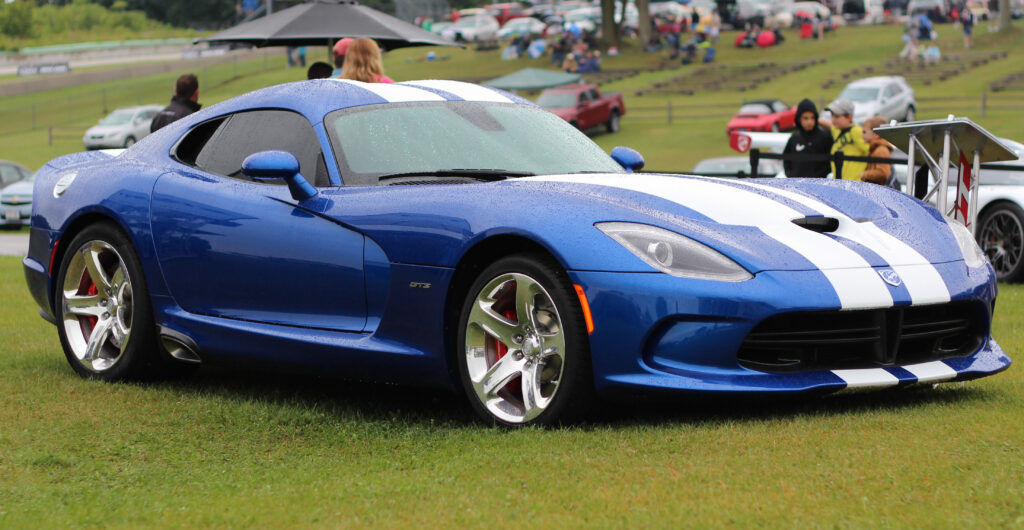
6. **2017 Fiat 124 Spider: A Cheaper Italian Roadster**The 2017 Fiat 124 Spider enters the sports car arena with an interesting pedigree, sharing its fundamental platform with the immensely popular Mazda MX-5 Miata. However, to simply label it as a rebadged Miata would be to overlook its distinct character and charm. The 124 Spider carves out its own niche by offering a compelling alternative to the Japanese icon, infused with a unique Italian design flair and a noticeably different powertrain philosophy that appeals to a specific segment of enthusiasts.
Under the bonnet, the Fiat 124 Spider departs from the Miata’s naturally aspirated engine in favor of a 1.4-liter turbocharged engine. This choice provides a different driving experience, offering a punchier, torquier delivery at lower RPMs compared to the Miata’s high-revving nature. This turbocharged unit helps the 124 Spider achieve similar overall performance figures to its platform-mate but with a character that feels distinctly Italian – more relaxed yet capable of quick bursts of speed. It also contributes to a slightly more refined interior ambiance and a quieter cabin, catering to those who prefer a bit more comfort on their spirited drives.
While it may not possess the same cult status or iconic recognition as the Miata, the 2017 Fiat 124 Spider offers an exciting and engaging driving experience in its own right. Its retro styling cues, combined with a sport-tuned suspension, make it a fun, agile roadster perfect for spirited weekend drives or daily enjoyment. As a more affordable option in the competitive sports car market, the 124 Spider successfully blends performance with distinct Italian style, proving that a unique personality, even when based on a shared foundation, can create an exceptionally rewarding and underrated vehicle.
Car Model Information: 2023 Nissan Rogue SV
Name: Fiat 124 Sport Spider
Caption: Fiat 124 Sport Spider (CS)
Aka: Fiat Spider 2000 , Pininfarina Spider (1982–1985)
Manufacturer: Fiat Automobiles
Production: 1966–1985
Assembly: Turin
Designer: Pininfarina,Tom Tjaarda,Franco Martinengo (design director),Battista Pininfarina
Class: Sports car
BodyStyle: Cabriolet (automobile)
Layout: Front-engine, rear-wheel-drive layout
Related: Fiat 124
Engine: {{convert,1438,cc,L,1,abbr=on,Inline-four engine
Abbr: on
Transmission: Manual transmission,5-speed manual,Automatic transmission
Wheelbase: 89.75 in
Length: 156.25 in
Width: 63.5 in
Height: 49.25 in
Weight: 2028 lb
Predecessor: Fiat Pininfarina Cabriolet
Successor: Fiat Barchetta,Fiat 124 Spider (2016)
Sp: uk
Categories: 1960s cars, 1970s cars, 1980s cars, All articles with dead external links, Articles with dead external links from August 2025
Summary: The Fiat 124 Sport Spider is a convertible sports car marketed by Fiat for model years 1966–1982 and by Pininfarina for 1982–1985 model years. Designed by and manufactured at the Italian carrozzeria Pininfarina factory, the monocoque, front-engined, rear-drive Sport Spider debuted at the November 1966 Turin Auto Show with styling by Tom Tjaarda.
Fiat later marketed the car as the Spider 2000 (1979–1982). After being retired by Fiat, Pininfarina continued the production of the model under its own brand as Pininfarina Spider Azzurra for the North American market and Pininfarina Spidereuropa for the European market for three more years, from August 1982 until 1985.
In 2015, a successor of the Fiat 124 Spider was presented at the Los Angeles Auto Show.
Get more information about: Fiat 124 Sport Spider
Buying a high-performing used car >>>
Brand: Fiat Model: 124 Spider
Price: $21,998 Mileage: 47,048 mi.
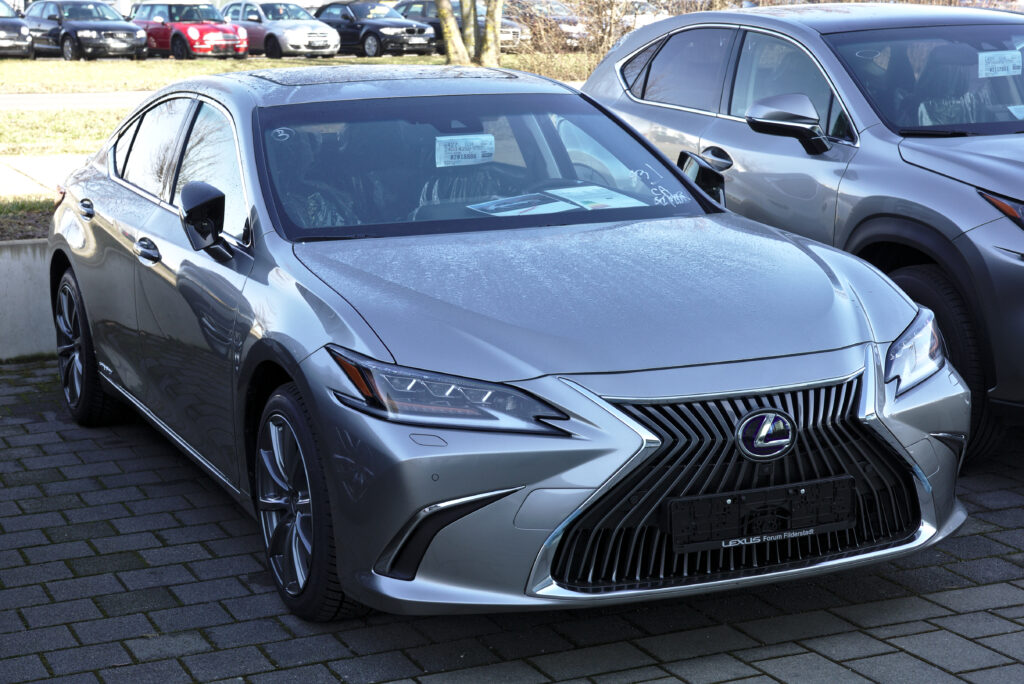
7. **2015 Lexus RC F: A Reliable High-Performance Coupe**The 2015 Lexus RC F is a prime example of a performance machine that, despite its formidable capabilities, often gets overlooked in discussions dominated by its German rivals. At first glance, its size and luxury-oriented design might not scream “sports car” in the traditional sense, but make no mistake: the RC F packs a serious punch and delivers a high-performance experience that blends refinement with raw power in a distinctly Lexus manner. It’s a compelling package for those who value both speed and everyday usability.
The heart of the RC F’s appeal lies in its magnificent 5.0-liter naturally aspirated V8 engine. This orchestral powerhouse produces a staggering 470 horsepower, delivering a linear and immensely satisfying power delivery that is becoming increasingly rare in an era of forced induction. This engine provides thrilling acceleration and a sonorous exhaust note that is pure automotive bliss, making every drive an event. But the RC F is more than just a straight-line bruiser; its aggressive styling is complemented by a sophisticated torque-vectoring differential and a finely tuned sport-tuned suspension, allowing it to compete effectively against established contenders like the BMW M4.
What truly sets the Lexus RC F apart, and contributes to its underrated status, is Lexus’ renowned reputation for reliability. This makes the RC F a sensible, yet exhilarating, choice for a high-performance coupe that doesn’t demand constant attention or excessive maintenance typically associated with cars of this caliber. It’s a vehicle that can effortlessly transition from a comfortable daily driver to an engaging backroad carver, offering a rare combination of luxury, performance, and peace of mind. For the discerning enthusiast, the 2015 Lexus RC F represents a compelling and reliable high-performance coupe that delivers spades of excitement.
The journey through underrated automotive brilliance continues. While the first seven entries offered a compelling look at vehicles that defied expectations and delivered exceptional performance, our quest for hidden gems is far from over. This next selection dives deeper into the nuanced world of sports cars, uncovering models that boast unique engineering, historical significance, or an innovative blend of features, yet remain surprisingly overlooked. For the dedicated performance seeker, these cars represent not just a savvy investment but an opportunity to experience driving pure joy and unexpected prowess. Prepare to have your perceptions challenged as we reveal more machines that truly deserve their place in the pantheon of great sports cars.
Car Model Information: 2023 Nissan Rogue SV
Name: Lexus RC
Caption: Lexus RC F Final Edition (USC10, Japan)
Manufacturer: Toyota
ModelCode: XC10
Production: October 2014 – present
ModelYears: 2015–2025
Assembly: Tahara, Aichi
Designer: Pansoo Kwon (2012)
Class: Sports car
BodyStyle: coupé
Layout: unbulleted list
Platform: Toyota N platform#New N
Related: unbulleted list
Engine: unbulleted list
Motor: unbulleted list
Abbr: on
Powerout: unbulleted list
Transmission: unbulleted list
Wheelbase: 2730 mm
Length: convert
Width: convert
Height: convert
Weight: convert
Predecessor: Lexus IS (XE20)#GSE20 / GSE21 (2008)
Sp: uk
Categories: 2020s cars, All-wheel-drive vehicles, All articles containing potentially dated statements, All articles with dead external links, All articles with unsourced statements
Summary: The Lexus RC (Japanese: レクサス・RC, Rekusasu RC) is a compact executive two-door sport coupé manufactured by Lexus, Toyota’s luxury division. The RC which according to Lexus stands for “Radical Coupe” is a two-door coupé version of the Lexus IS (XE30). The RC is designated as the XC10 series. The RC borrowed styling from the LF-LC concept and was previewed by the LF-CC concept, being designed as a proposal by Pansoo Kwon from 2010 to early 2012 and approved by supervising designers Yasuo Kajino and Tatsuya Takei.
Get more information about: Lexus RC
Buying a high-performing used car >>>
Brand: Lexus Model: RC F
Price: $21,998 Mileage: 47,048 mi.
Read more about: Investor Alert: These 10 Luxury Cars Become Depreciating Assets Once They Hit 5 Years Old
8. **2008 Mazda RX-8: A Rotary-Powered Sports Car**The 2008 Mazda RX-8 stands as a poignant reminder of Mazda’s commitment to unique engineering, being the last production model to proudly feature their distinctive rotary engine. In an industry increasingly dominated by conventional piston powerplants, the RX-8 carved out its own niche, offering an unparalleled driving experience defined by its high-revving nature and exceptional balance. This wasn’t just another sports car; it was a statement.
At its core was the 1.3-liter RENESIS engine, a technological marvel that generated around 232 horsepower. What truly set this engine apart was its ability to rev effortlessly to an astounding 9,000 RPM, delivering an exhilarating, linear power surge unlike anything else on the market. This unique power delivery, combined with a perfectly balanced chassis and responsive steering, made the RX-8 an absolute delight on winding roads, captivating drivers with its direct feedback and engaging dynamics.
Beyond its powertrain, the RX-8 also broke convention with its distinctive 4-door layout, ingeniously integrating rear-hinged “freestyle” doors that provided surprisingly easy access for four passengers. This feature made it an exceptionally practical sports car, blending everyday usability with genuine performance capabilities—a rare combination for vehicles in its class. It defied the traditional compromises, offering versatility without sacrificing its sporty credentials.
Despite its thrilling character and groundbreaking design, the RX-8 faced significant challenges, primarily related to the rotary engine’s known requirement for frequent maintenance and its eventual struggle against increasingly strict emission regulations. These factors ultimately led to its discontinuation. However, for those who appreciate innovative engineering and a pure, unadulterated driving experience, the RX-8 remains a thrilling car to pilot, standing as a fitting, albeit complex, tribute to Mazda’s enduring engineering legacy and its audacious spirit.
Car Model Information: 2005 Mazda RX-8 6 Speed Manual
Name: Mazda RX-8
Manufacturer: Mazda
Production: February 2003 – June 2012
Assembly: Hiroshima
Class: Sports car
BodyStyle: Quad coupé
Related: Mazda MX-5 (NC)
Layout: Front-engine, rear-wheel-drive layout#Front mid-engine, rear-wheel-drive layout
ModelCode: List of Mazda model codes#Model codes
Designer: Ikuo Maeda,Wu-Huang Chin (interior designer)
Engine: Mazda Wankel engine#13B-MSP Renesis,Wankel engine
Powerout: convert
Transmission: Manual transmission,6-speed manual,Jatco JR405E transmission,6-speed automatic
Wheelbase: 2703 mm
Abbr: on
Length: 2003–2008: {{convert,4425,mm,in,1,abbr=on
Width: 1770 mm
Height: 1340 mm
Weight: Manual models: {{convert,1309,-,1373,kg,lb,0,abbr=on
Predecessor: Mazda RX-7
ModelYears: 2003–2012
Doors: Car door#Conventional
Categories: 2010s cars, All Wikipedia articles written in American English, All articles with failed verification, All articles with unsourced statements, Articles with failed verification from November 2019
Summary: The Mazda RX-8 is a sports car manufactured by Japanese automobile manufacturer Mazda between 2003 and 2012. It was first shown in 2001 at the North American International Auto Show. It is the direct successor to the RX-7. Like its predecessors in the RX range, it is powered by a rotary Wankel engine. The RX-8 was available for the 2003 model year in most parts of the world.
The Mazda RX-8 utilizes a rotary Wankel engine, and the non-reciprocating piston engine uses a triangular rotor inside a near oval housing, producing from 141 kW (189 hp) and 164 lb⋅ft (222 N⋅m) of torque, to 177 kW (237 hp) and 159 lb⋅ft (216 N⋅m) of torque from launch.
The RX-8 was discontinued for the 2012 model year without a successor. It was removed earlier from the European market in 2010 after the car failed to meet emissions standards. Due to falling sales from Europe coupled with rising yen prices, Mazda could not justify the continued sale of the RX-8 in other markets. 192,094 units were produced during its nine-year production run.
Get more information about: Mazda RX-8
Buying a high-performing used car >>>
Brand: Mazda Model: RX-8
Price: $9,495 Mileage: 60,320 mi.

9. **2006 Chrysler Crossfire SRT-6: A Mercedes-Benz-Designed Roadster**The 2006 Chrysler Crossfire SRT-6 is a textbook example of a vehicle whose true merits were often overshadowed by its polarizing design and brand perception. While the standard Crossfire might have been dismissed by some, the SRT-6 variant was a different beast altogether, boasting an impressive mechanical pedigree thanks to its deep roots in German engineering. It was, in essence, an American-styled, Mercedes-Benz-engineered roadster, offering far more than met the eye.
Underneath its distinctive exterior, the Crossfire SRT-6 inherited its formidable underpinnings from the highly respected Mercedes-Benz SLK platform. This crucial foundation meant it benefited from robust, proven components and a sophisticated chassis design, providing a level of refinement and structural integrity often absent in its domestic counterparts. This shared heritage immediately elevated its performance potential, positioning it as a serious contender for discerning enthusiasts.
Propelling the SRT-6 was a supercharged 3.2-liter V6 engine, a powerhouse borrowed directly from AMG, producing a robust 330 horsepower. This force-fed engine delivered exhilarating acceleration and a broad powerband, transforming the Crossfire from a stylish cruiser into a genuine high-performance machine. Coupled with its sport-tuned suspension, the SRT-6 offered a driving experience that was both comfortable for long-distance cruising and surprisingly engaging when pushed through challenging corners.
While its design, inspired by the Art Deco period with its sleek lines and aggressive stance, might not have captured everyone’s imagination, the 2006 Chrysler Crossfire SRT-6 delivered a driving experience far richer than its market reception suggested. It showcased Mercedes’ engineering expertise, offering a comfortable yet enjoyably spirited ride. For those willing to look past the badge and the unique styling, the SRT-6 remains a hidden gem, providing a blend of performance and sophisticated dynamics at an often-unjustified bargain.
Car Model Information: 2023 Nissan Rogue SV
Name: Chrysler Crossfire
Caption: 2004 Chrysler Crossfire coupe
Manufacturer: DaimlerChrysler
Production: February 2003 – December 2007 (76,014 units)
ModelYears: 2004–2008
Assembly: Germany
Designer: Eric Stoddard
Class: Sports car
BodyStyle: convertible (car),fastback
Platform: Chrysler ZH,Mercedes-Benz SLK-Class (R170)
Related: Mercedes-Benz SLK-Class (R170)
Layout: Front-engine, rear-wheel-drive layout
Engine: Mercedes-Benz
Transmission: Mercedes-Benz,Chrysler NSG370 transmission
Wheelbase: 94.5 in
Abbr: on (roadster)
Length: 159.8 in
Width: 69.5 in
Height: {{convert,51.5,in,mm,0,abbr=on
Predecessor: Chrysler Prowler,Chrysler TC by Maserati
Categories: Articles with short description, Cars discontinued in 2007, Cars introduced in 2003, Chrysler vehicles, Commons category link from Wikidata
Summary: The Chrysler Crossfire is a rear-wheel drive, two-seat sports car, marketed by Chrysler and manufactured by Karmann of Germany from 2004 through the 2008 model years.
Developed during the period when Chrysler and Mercedes Benz had merged, known as Daimler Chrysler, the two-seater uses the Mercedes-Benz R170 platform and shares 80% of its components with the first generation SLK.
Beginning in 2001 as a concept car styled by Eric Stoddard, the Crossfire was further refined by Andrew Dyson before production started in 2003 for the 2004 model year sales.
Get more information about: Chrysler Crossfire
Buying a high-performing used car >>>
Brand: Chrysler Model: Crossfire SRT-6
Price: $21,998 Mileage: 47,048 mi.
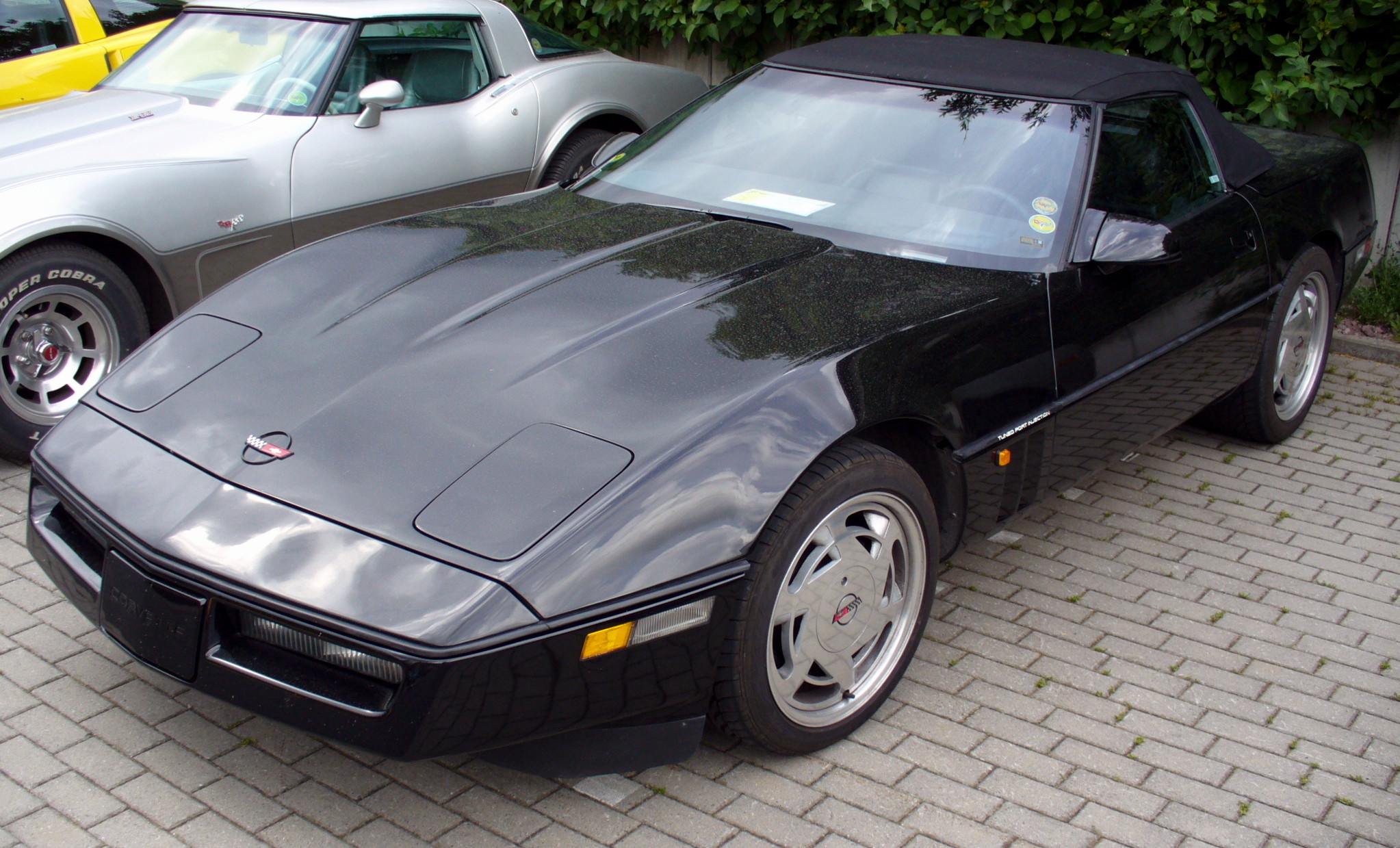
10. **Chevrolet Corvette C4: The Model That Resurrected the Corvette Name**The Chevrolet Corvette C4 holds a truly pivotal, yet frequently underrated, place in the illustrious history of America’s sports car. Arriving in the 1980s, it wasn’t just an evolution; it was a revolution that single-handedly dragged the aging Corvette brand into the modern era, successfully reestablishing its credibility and performance prowess after the challenging C3 generation. The C4 was a bold declaration that America could still build a proper, cutting-edge sports car.
A significant leap forward in both design and performance, the C4 featured a much more contemporary aesthetic and a host of technological advancements. Initially, engines like the L98 delivered solid performance, but it was the introduction of key powerplants such as the LT5 and LT4 that truly cemented its legacy. The formidable ZR1 variant, in particular, housed a Lotus-engineered V8 engine that cranked out an astounding 405 horsepower, thrusting the C4 into the upper echelons of performance cars globally.
Beyond raw power, the C4 marked substantial improvements in driving dynamics. Its completely redesigned chassis, coupled with an advanced suspension system, provided significantly enhanced handling, precision, and ride quality compared to its predecessor. This made the C4 a far more refined and capable machine on both the street and the track, offering a level of sophistication that genuinely surprised critics and enthusiasts alike, proving its mettle against established European competitors.
Despite the later generations of Corvette often stealing the spotlight, the C4’s monumental contribution to the brand’s survival and evolution cannot be overstated. It was the model that resurrected the Corvette name, making it a well-rounded sports car that still offers an engaging driving experience. Today, the C4 Corvette remains highly regarded as a driving classic and an incredibly affordable option for sports car enthusiasts looking for a piece of American performance heritage without the hefty price tag.
Car Model Information: 2023 Nissan Rogue SV
Name: Chevrolet Corvette (C4)
Caption: 1994 Chevrolet Corvette
Manufacturer: Chevrolet
Production: January 3, 1983 – June 20, 1996
ModelYears: 1984–1996
Predecessor: Chevrolet Corvette (C3)
Successor: Chevrolet Corvette (C5)
Class: Sports car
Assembly: Bowling Green, Kentucky
BodyStyle: targa top,Convertible (car)
Layout: Front-engine, rear-wheel-drive layout#FMR
Platform: GM Y platform
Wheelbase: cvt
Length: cvt
Width: cvt
Height: Coupe: {{cvt,46.7,in,mm
Transmission: automatic transmission,Overdrive (mechanics),GM 4L60-E transmission,ZF Friedrichshafen
Engine: {{cvt,350,cuin,L,1,Chevrolet small-block engine (first- and second-generation)#L83
Weight: cvt
Designer: Jerry Palmer
Related: Callaway Cars#C4 (RPO B2K Callaway Twin Turbo Corvette),Callaway Cars#C4 (RPO B2K Callaway Twin Turbo Corvette),Callaway Cars#C4 (RPO B2K Callaway Twin Turbo Corvette),Callaway Cars#C6 (Callaway SuperNatural Corvette),Callaway Cars#C4 (RPO B2K Callaway Twin Turbo Corvette)
Categories: 1990s cars, All articles with dead external links, All articles with unsourced statements, Articles with dead external links from November 2016, Articles with permanently dead external links
Summary: The Chevrolet Corvette (C4) is the fourth generation of the Corvette sports car, produced by American automobile manufacturer Chevrolet from 1983 until 1996. The convertible returned, as did higher performance engines, exemplified by the 375 hp (280 kW) LT5 found in the ZR1. In early March 1990, the ZR1 would set new records for the highest average speed over 24 hours at over 175 mph (282 km/h) and highest average speed over 5,000 miles at over 173 mph (278 km/h). With a completely new chassis, modern sleeker styling, and other improvements to the model, prices rose and sales declined. The last C4 was produced on June 20, 1996.
Get more information about: Chevrolet Corvette (C4)
Buying a high-performing used car >>>
Brand: Chevrolet Model: Corvette C4
Price: $21,998 Mileage: 47,048 mi.
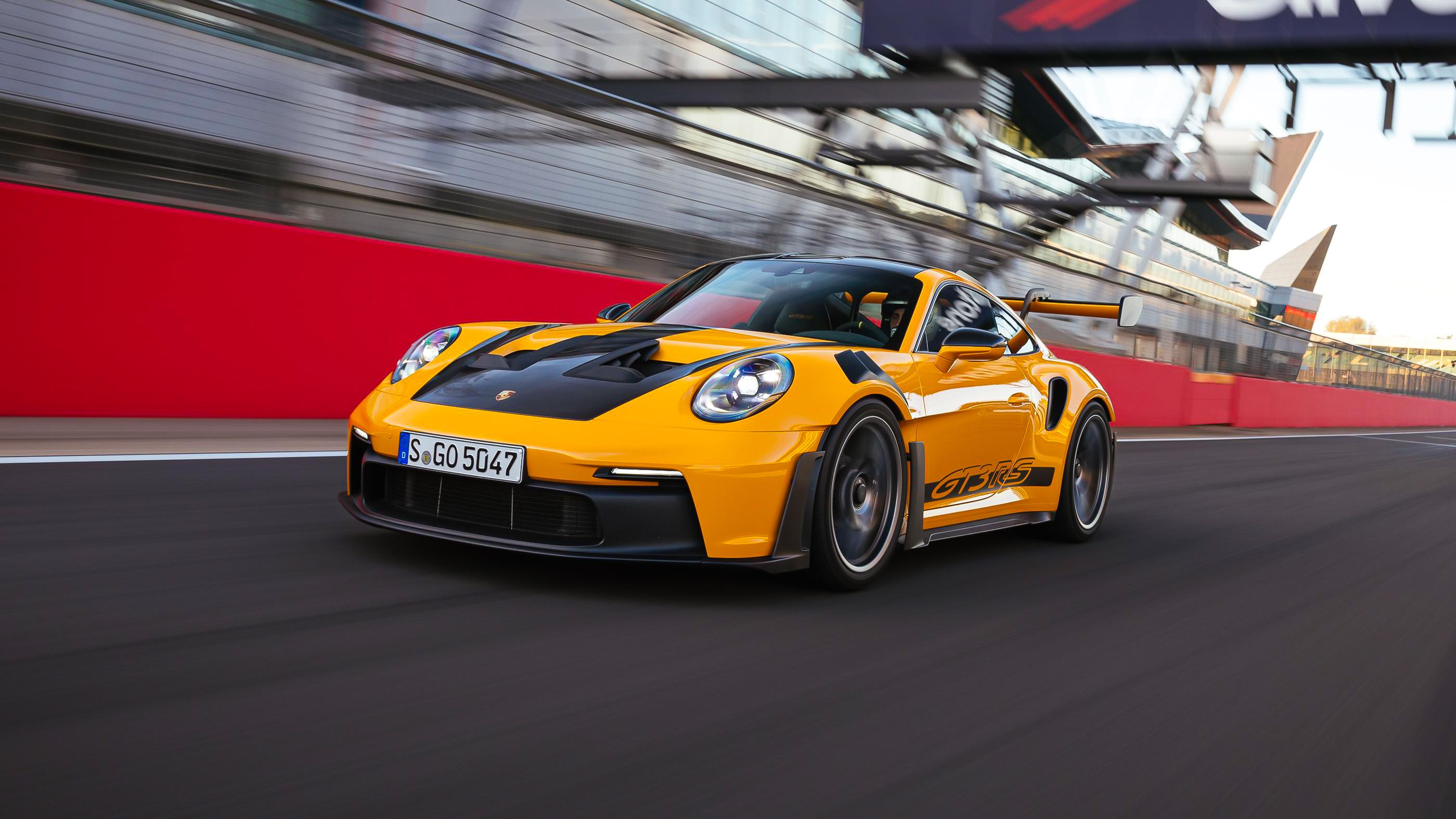
11. **Porsche 968: The Overlooked Evolution of a Front-Engined Marvel**The Porsche 968 often finds itself in the enigmatic shadow of its more famous front-engined predecessor, the 944, and of course, the iconic 911. Yet, to overlook the 968 is to miss a truly sophisticated and highly capable sports car that represented the pinnacle of Porsche’s front-engine, rear-wheel-drive development. It was far more than a mere facelift; it was a substantially re-engineered machine, approximately 80% different from the 944 it replaced.
This significant overhaul resulted in a vehicle that delivered a remarkably refined driving experience, one that was, in many aspects, just as capable and engaging as the contemporary 911 of its era. Porsche engineers meticulously honed every aspect, from its aerodynamically sculpted body to its mechanical components, ensuring that the 968 offered a compelling blend of daily usability and genuine track prowess. It was a testament to continuous improvement.
At the heart of the 968 was a highly advanced 3.0-liter, four-cylinder engine—the largest four-cylinder in a production car at the time—producing a strong 240 horsepower and 225 lb-ft of torque. This unit was known for its impressive torque delivery and smooth operation, providing solid performance figures for its time. Crucially, the engine’s position and the transaxle layout contributed to the model’s excellent weight distribution, a signature trait of Porsche’s front-engined cars.
With years of iterative development from the 924 and 944 generations, the 968 benefited from a finely tuned chassis that translated into brilliant handling. Its responsive steering and predictable limits made it an absolute joy to pilot on winding roads, offering a communicative and confidence-inspiring drive. The Porsche 968 is truly a forgotten gem, deserving far more appreciation for its sophisticated engineering, refined performance, and significant role in Porsche’s extensive sporting lineage.
Car Model Information: 1994 Porsche 968 Base
Name: Porsche 968
Manufacturer: Porsche AG
Class: Sports car
Production: 1991–1995
Assembly: Stuttgart
Predecessor: Porsche 944
Successor: Porsche 986
BodyStyle: coupé,convertible
Layout: Front-engine, rear-wheel-drive layout
Engine: Straight-four engine,Turbocharger
Transmission: Manual transmission,Tiptronic
Wheelbase: cvt
Length: 4320 mm
Abbr: on
Width: 1735 mm
Height: 1275 mm
Weight: 1400 kg
Designer: Harm Lagaay
Categories: All articles with unsourced statements, Articles with short description, Articles with unsourced statements from May 2022, CS1: long volume value, CS1 German-language sources (de)
Summary: The Porsche 968 is a sports car manufactured by German automobile manufacturer Porsche AG from 1991 until 1995. It was the final evolution of a series of water-cooled front-engine rear wheel drive models that began almost 20 years earlier with the introduction of the 924. It was intended to take over the entry-level position in the company lineup from the 944, which much of the vehicle was derived from. The 968 was Porsche’s last new front-engined vehicle until the introduction of the Porsche Cayenne in 2003.
Get more information about: Porsche 968
Buying a high-performing used car >>>
Brand: Porsche Model: 968
Price: $15,885 Mileage: 110,773 mi.
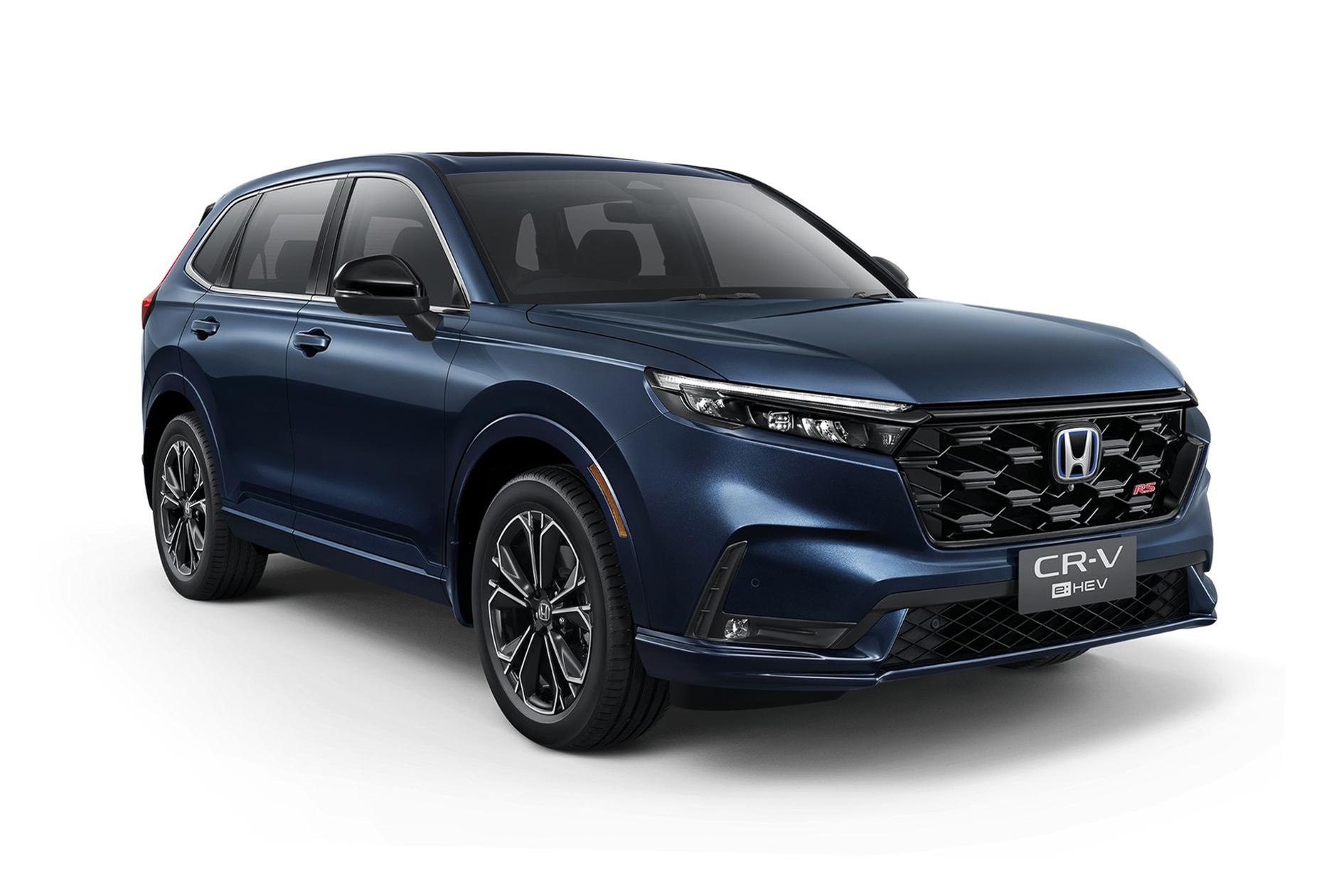
12. **Honda S2000: A High-Revving Masterpiece of Precision**The Honda S2000 has garnered a passionate following among driving purists, yet it still doesn’t always receive the widespread credit it unequivocally deserves as one of the finest lightweight sports cars ever built. Introduced in 1999 to celebrate Honda’s 50th anniversary, this roadster was conceived with a singular focus: to deliver an uncompromised, exhilarating driving experience that deeply connected the driver to the road.
Central to the S2000’s legendary status was its remarkable powertrain. Initially featuring the 2.0-liter F20C engine, it produced an astonishing 247 horsepower, achieving this incredible output through a naturally aspirated, high-revving design that could scream all the way to a breathtaking 9,000 RPM. This engine was paired with an exquisite six-speed manual transmission, widely regarded as one of the best ever put into a sports car for its impossibly short, precise throws and satisfying engagement.
Beyond its sensational engine and gearbox, the S2000 was a masterclass in chassis tuning and balance. Its perfect 50:50 weight distribution and razor-sharp handling characteristics made it an incredibly agile and responsive machine. Every input from the driver translated immediately into vehicle motion, providing a level of feedback and control that few cars, even those far more expensive, could match. It was a vehicle that rewarded skill and precision behind the wheel.
Later models, such as the AP2, saw an upgrade to a 2.2-liter F22C1 engine, which improved low-end torque while still maintaining its high-revving spirit. The Honda S2000 remains a lightweight performance machine that embodies the purest essence of a driver’s car. Its blend of exceptional engineering, intoxicating powertrain, and precise dynamics solidifies its place as an underrated icon, offering an an experience that continues to thrill and inspire enthusiasts worldwide.
Car Model Information: 2003 Honda S2000 Base
Name: Honda S2000
Manufacturer: Honda
Production: 1999–2009 (110,673 produced)
Class: Sports car
Layout: Front-engine, rear-wheel-drive layout#Front mid-engine, rear-wheel-drive layout
BodyStyle: Roadster (automobile)
Designer: Shigeru Uehara
Caption: 2005 Honda S2000 (AP2)
Predecessor: Honda S800
Categories: 2000s cars, All articles lacking reliable references, Articles lacking reliable references from May 2024, Articles with short description, CS1: unfit URL
Summary: The Honda S2000 is a front-mid engine open top sports car that was manufactured by Japanese automobile manufacturer Honda, from 1999 until 2009. First shown as a concept car called the SSM at the Tokyo Motor Show in 1995, the production version was launched on April 15, 1999, to celebrate the company’s 50th anniversary. The S2000 is named for its engine displacement of two liters, while “S” stood for “sports” carrying on in the tradition of the S500, S600, and S800 roadsters of the 1960s.
Several revisions were made throughout the car’s production life, including changes to the engine, gearbox, suspension, interior and exterior. Officially two variants exist: the initial launch model was given the chassis code AP1; though cosmetically similar, the facelifted version, known as the AP2 in North America and Japan, incorporated significant changes to the drivetrain and suspension. Production of the S2000 ceased on August 19, 2009.
The Honda S2000 was notable for its exceptional specific power output of about 92 kW (124 hp) per liter, or about two horsepower per cubic inch, the highest of any mass production, naturally aspirated car, until 2010.
Get more information about: Honda S2000
Buying a high-performing used car >>>
Brand: Honda Model: S2000
Price: $28,495 Mileage: 35,362 mi.

13. **Mitsubishi 3000GT VR-4: A Technological Powerhouse Ahead of its Time**In the vibrant and competitive landscape of 1990s Japanese sports cars, the Mitsubishi 3000GT VR-4 was a technological tour de force that, despite its incredible innovation and formidable performance, often found itself overshadowed. While contemporaries like the Supra and RX-7 grabbed more headlines, the VR-4 offered a dizzying array of advanced features that truly positioned it as a marvel of engineering, making it one of the decade’s most sophisticated grand tourers.
What set the 3000GT VR-4 apart was its comprehensive suite of performance technologies. It came equipped with a potent twin-turbo V6 engine, capable of generating an impressive 320 horsepower, delivering blistering acceleration and a deep, guttural exhaust note. But Mitsubishi didn’t stop there; the VR-4 boasted an advanced all-wheel-drive system for maximum grip and traction, coupled with four-wheel steering for enhanced agility and stability during spirited driving.
Further showcasing its technological prowess, the VR-4 also featured active aerodynamics, including an automatically adjusting front air dam and a rear spoiler, which optimized downforce at higher speeds. This kind of sophisticated integration of performance-enhancing systems was groundbreaking for its time, demonstrating Mitsubishi’s ambition to create a world-class sports car that could compete with the best of Europe and Japan.
Despite its innovative features and potent engine, the Mitsubishi 3000GT VR-4 never quite achieved the mainstream fame or cult status of some of its rivals. Perhaps its complexity or heavier curb weight contributed to its understated reception. Nevertheless, for those who appreciate groundbreaking technology married to serious performance, the 3000GT VR-4 stands as a genuinely underrated masterpiece, a testament to audacious engineering that delivered a thrilling and remarkably advanced driving experience.
Car Model Information: 2023 Nissan Rogue SV
Caption: Mitsubishi 3000GT
Name: Mitsubishi 3000GT (Z15A/Z16A)
Aka: Mitsubishi GTO (Japan),Dodge Stealth
Manufacturer: Mitsubishi Motors
Assembly: Okazaki, Aichi
Production: unbulleted list
Predecessor: Mitsubishi Starion
Class: unbulleted list
ModelCode: unbulleted list
Related: Mitsubishi Diamante
BodyStyle: ubl
Engine: unbulleted list
Transmission: unbulleted list
Wheelbase: 2470 mm
Abbr: on VR-4 Spyder
Length: 4600 mm
Width: 1840 mm
Height: 1285 mm
Weight: {{convert,3131,lb,kg,0,abbr=on
Layout: Transverse engine,front-engine,front-wheel drive
Designer: Masaru Suzuki (1987)
Categories: 2000s cars, All-wheel-drive vehicles, All articles with unsourced statements, Articles with short description, Articles with unsourced statements from September 2025
Summary: The Mitsubishi 3000GT is a front-engine, all-wheel/front-wheel drive grand touring/sports car manufactured and marketed by Mitsubishi from 1990 until 2000 over three different series. Manufactured in a three-door hatchback coupé body style in Nagoya, Japan, the 2+2 four-seaters were marketed in the Japanese domestic market as the GTO, and globally as 3000GT. In North America, it was sold both as the Mitsubishi 3000GT (1991–1999) and the Dodge Stealth (1991–1996), a badge engineered, mechanically identical captive import. As a collaborative effort between Chrysler and Mitsubishi Motors, Chrysler was responsible for the Stealth’s exterior styling.
The car was based on Mitsubishi’s Sigma/Diamante and retained their transverse mounted 3-liter, 24-valve V6 engines and front-wheel-drive layout. The GTO’s engines were naturally aspirated or with twin-turbochargers and were also available with active aerodynamics (automatically adjusting front and rear spoilers), four-wheel-steering, full-time all-wheel-drive and adaptive suspension.
Mitsubishi marketed a retractable hardtop variant, which were engineered and converted from coupé models in California by ASC, and sold as the GT Spyder or VR4 Spyder for model years 1993–1995. These were the first fully automated retractable hardtop marketed since the 1959 Ford Skyliner.
The JDM model took its name from the Galant GTO, a two-door hardtop coupé marketed by the company in the early 1970s, which in turn took its name from the Ferrari 250 GTO, short for Gran Turismo Omologata – “Omologata” signifying that it met motorsport homologation requirements.
Get more information about: Mitsubishi 3000GT
Buying a high-performing used car >>>
Brand: Mitsubishi Model: 3000GT VR-4
Price: $21,998 Mileage: 47,048 mi.
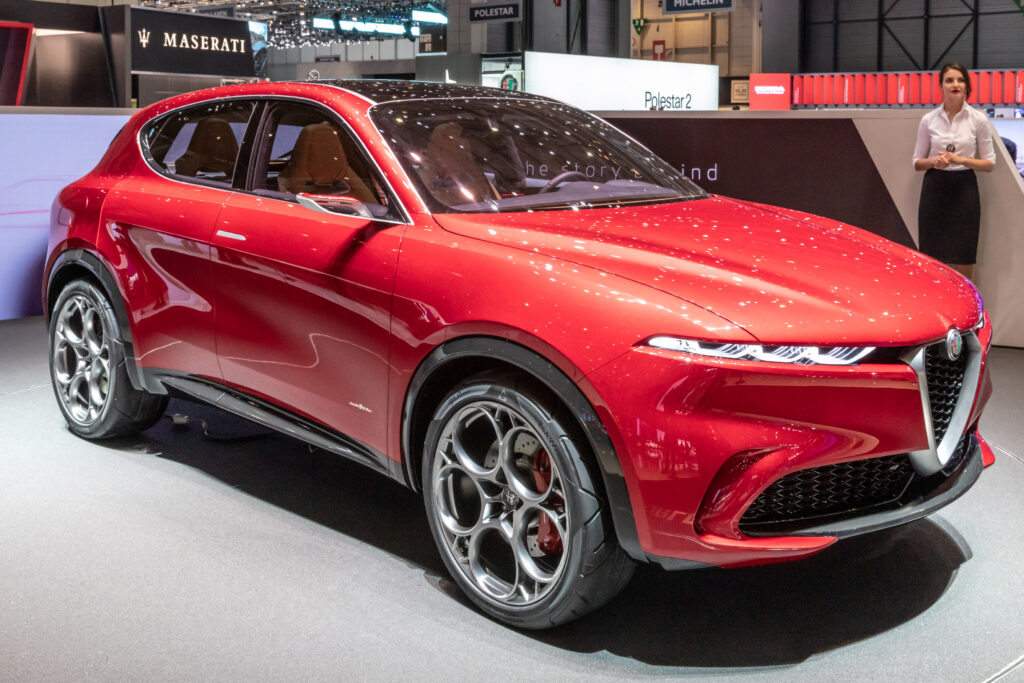
14. **Alfa Romeo 4C: The Carbon Fiber Italian Pocket Rocket**The Alfa Romeo 4C burst onto the scene as a true exotic, a striking example of Italian elegance and a singular focus on raw, unadulterated performance. In an automotive world often swayed by practicality and creature comforts, the 4C made no such concessions, unapologetically delivering a visceral, heart-pounding driving experience that immediately set it apart. It’s a symphony of style and speed, delivering precisely what every enthusiast seeks in a lightweight sports car.
At the core of its lightweight philosophy is a carbon fiber monocoque chassis, a technology typically reserved for hypercars, which contributes significantly to its featherlight curb weight and incredible structural rigidity. This engineering marvel is paired with a mid-mounted 1.7-liter turbocharged four-cylinder engine, a compact powerhouse that punches well above its weight, producing 237 horsepower and a robust 258 lb-ft of torque.
The combination of its light weight and potent engine allows the 4C to sprint from 0 to 60 mph in a blistering 4.1 seconds, placing it firmly in serious performance territory. But the numbers only tell part of the story; the 4C’s true magic lies in its handling. Its nimble and precise dynamics, unassisted steering, and perfectly balanced chassis provide a direct, unfiltered connection to the road, making every corner an exercise in pure driving exhilaration.
The Alfa Romeo 4C, with its dramatic Italian styling and single-minded dedication to driver engagement, is more than just a car; it’s an experience. Its arresting design, from its muscular lines to its distinctive headlights, ensures it exudes magnetism and turns heads wherever it goes. For those bold enough to indulge in its exclusive driving encounter, the 4C stands as an unforgettable, albeit underrated, red diva on wheels that celebrates the purest form of sports car passion.
Car Model Information: 2023 Nissan Rogue SV
Name: Alfa Romeo 4C,Alfa Romeo 4C Spider
Manufacturer: FCA Italy
Production: [object Object]
Assembly: Modena
Class: Sports car
Layout: Rear mid-engine, rear-wheel-drive layout
BodyStyle: coupé
Engine: Fiat Pratola Serra modular engines,Turbocharger,Straight-four engine
Transmission: Dual clutch transmission,FPT C635 DDCT transmission
Wheelbase: 2380 mm
Abbr: on Coupé
Length: 3989 mm
Width: 2090 mm
Height: 1183 mm
Weight: 940 kg
Related: Abarth Classiche 1000 SP
Designer: Marco Tencone
ModelYears: 2014–2020
Categories: Alfa Romeo concept vehicles, Alfa Romeo vehicles, All articles with unsourced statements, Articles with short description, Articles with unsourced statements from April 2022
Summary: The Alfa Romeo 4C (Type 960) is a mid-engined sports car that was produced by Italian car manufacturer Alfa Romeo. Unveiled at the 2013 Geneva Motor Show, the 4C was initially only available as a coupé, with a spider body style coming a few years later in 2015. The name 4C refers to its straight-four engine.
Get more information about: Alfa Romeo 4C
Buying a high-performing used car >>>
Brand: Alfa Romeo Model: 4C
Price: $21,998 Mileage: 47,048 mi.
As our comprehensive journey through the landscape of underrated sports cars concludes, it becomes undeniably clear that true automotive brilliance isn’t always found in the spotlight. From the rotary-powered agility of the Mazda RX-8 and the Mercedes-engineered sophistication of the Chrysler Crossfire SRT-6, to the pivotal modernization of the Corvette C4 and the refined evolution of the Porsche 968, these machines challenge the conventional narratives. Add to that the high-revving precision of the Honda S2000, the technological marvel that was the Mitsubishi 3000GT VR-4, and the carbon-fiber artistry of the Alfa Romeo 4C, and you have a collection of vehicles that offer exceptional value and an exhilarating driving experience. For the performance seeker, someone who prioritizes objective evidence, driving dynamics, and a genuine connection to the road over mere brand hype, these hidden gems offer an unparalleled opportunity. They prove that sometimes, the most rewarding automotive experiences are found off the beaten path, waiting to be rediscovered by those who truly appreciate the art and science of speed. So, the next time you’re searching for your next thrill, remember these unsung heroes – they might just offer the most compelling drive of your life.



